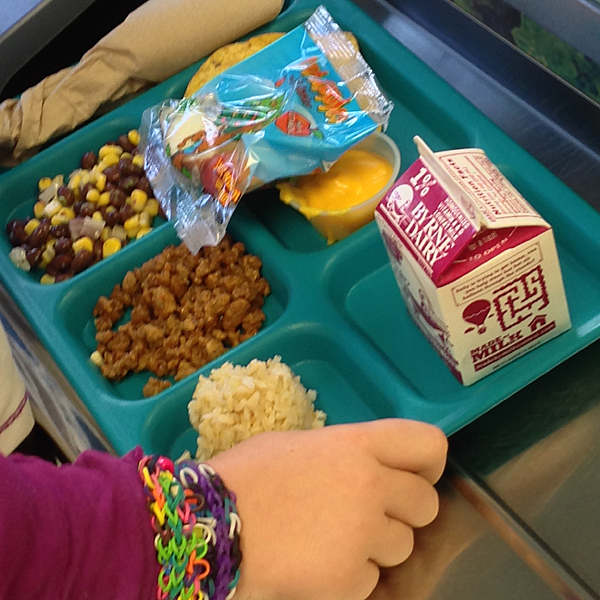
Chicken, pizza, hamburgers, tacos. The school menu choices may be similar to those offered when students’ parents were in school, but meals today are healthier than they were over 15 years ago. Mandates from the federal government are requiring school districts to offer healthier meals to their students. The changes are taking place gradually, but Cornwall Central School District has been ahead of the curve.
Director of Food Services Alexis Koudounas constantly reads literature on nutrition and said the changes she instituted just made sense.
“Last year was a big push for major changes all over the country,” Koudounas said. “Before that, we were already starting to do something regarding whole grains. We’ve always tried to give fresh fruit everyday as an offering before anyone told us we need to be doing that.”
Whole milk is no longer allowed to be served in school. Flavored milk must be skim, but students have the option of 1 percent or no fat when purchasing unflavored milk.
Brown rice is being offered instead of white rice, pasta is often whole grain, as well as bread. Food isn’t allowed to have transfat and there are new requirements regarding how much and what types of fruits and vegetables must be served weekly.
At least once a week, districts must serve a dark green vegetable. Cornwall offers these vegetables two or three times a week. Red/orange vegetables like carrots, red peppers, or sweet potatoes, must also be served once a week. Students must also receive one starchy vegetable, one legume, and one other vegetable once a week.
Students are not required to take the fruit or vegetable offered with their hot lunch but the consequence is paying a la carte prices, rather than the meal price. The school district also doesn’t benefit because it isn’t reimbursed for a la carte items. Cornwall receives $3.049 for each free meal, $2.78 for reduced price meals, and $0.399 for paid meals.
When it comes to selecting a meal, students from elementary school up to high school are given a number of options beyond the daily hot meal choice. The elementary and middle schools offer sandwich choices as well as bagel meals, which includes a whole wheat bagel, sunflower seeds, yogurt, fruit/vegetable, and milk. The high school offers sandwiches, salads, pastas, pizza, and Boar’s Head deli sandwiches as a la carte items. Koudounas said the a la carte items differ from the meal of the day because they don’t meet government requirements. The sandwiches may be made with a white instead of a wheat roll, and have too much meat or cheese on them. The portions are also larger.
While some of the food is made from scratch, much of it is pre-prepared. Items like tossed salad, mashed potatoes, bean salad, and vegetable lo mein are prepared on the days they’re offered.
“The problem is really the facilities. There are too many meals and not enough space. Even if we had a ton of people working, there aren’t the facilities to do it. It would be virtually impossible.”
Koudounas said very little food is wasted. Some of it can be used as leftovers, but she keeps production records so just the right amount is prepared



